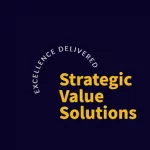Mastering Project, Program, and Portfolio Management for Organizational Success
In today’s fast-paced and competitive business world, success isn’t just about hard work; it’s about strategic planning, execution, and agility. Three key management disciplines—project management, program management, and portfolio management—form the backbone of this strategic approach. While each operates at different levels, together, they ensure businesses meet their objectives efficiently, enhance performance, manage risks, and remain adaptable in dynamic markets. Mastering these management practices is crucial for organizations striving to maintain their competitive edge.
The Power of Project Management
At the core of every successful initiative is project management, the art of getting things done right. This discipline focuses on the application of specialized skills, tools, and techniques to achieve specific goals within defined constraints such as time, budget, and resources. Projects are unique, with a clear beginning and end, and are designed to deliver a specific output or outcome.
The phases of project management include:
Initiating: Defining the project scope and objectives, including creating the project charter and identifying stakeholders.
Planning: This phase establishes the project’s scope, schedule, budget, and resources and results in a comprehensive project management plan.
Executing: Coordinating teams, managing resources, and ensuring the project stays on track.
Monitoring and Controlling: Tracking progress, measuring performance, and making necessary adjustments.
Closing: Officially completing the project, gaining acceptance of deliverables, and documenting lessons learned.
Popular tools like Gantt charts, Work Breakdown Structures (WBS), and project management software like Microsoft Project and Trello aid in organizing tasks and managing timelines. Risk management techniques, including SWOT analysis, ensure that potential challenges are identified and mitigated early in the project lifecycle.
The Broader Scope of Program Management
While project management focuses on individual projects, program management takes a broader view, overseeing multiple related projects to achieve long-term strategic goals. Programs are more complex and require a higher level of strategic vision and change management.
Program managers use tools like program roadmaps, balanced scorecards, and benefits realization management to ensure resources are allocated effectively across projects. By focusing on long-term outcomes, program management aligns individual projects with overarching organizational goals, ensuring strategic success.
The key distinction between project and program management lies in their goals: projects deliver specific outputs, while programs provide strategic outcomes that drive long-term business success.
Strategic Portfolio Management for Long-Term Success
At the highest level, portfolio management ensures that all projects and programs align with the organization’s strategic objectives. This involves selecting and prioritizing suitable projects, effectively allocating resources, and balancing risks to maximize return on investment (ROI).
Portfolio managers use advanced tools like Microsoft Project Portfolio Management (PPM) and Planview Enterprise to track performance, manage resources, and assess risks. These tools provide real-time insights, enabling businesses to make data-driven decisions and adapt to changing market conditions.
Integrating Project, Program, and Portfolio Management
By integrating project, program, and portfolio management, businesses can:
Maintain Strategic Alignment: Ensure projects and programs align with broader business objectives.
Enhance Efficiency: Streamline operations, reduce waste, and optimize resource use.
Improve Risk Management: Anticipate and mitigate risks across all levels of the organization.
Enable Better Decision-Making: Leverage data-driven insights to make informed decisions that capitalize on opportunities and minimize threats.
Real-World Insights: Dashboarding for Success
Consider the role of dashboards in facilitating management practices. Two data analysts might be tasked with creating project and program dashboards. Project dashboards provide detailed analytics on timelines, budgets, risks, and completion rates, enabling project managers to make informed decisions. In contrast, program dashboards offer a high-level overview of related projects, highlighting key risks, resource needs, and progress toward strategic goals. This allows program managers to allocate resources effectively and report on overall program performance to portfolio managers.
Case Study
As these tend to be mixed up, a case study is a perfect way to learn better. Here we have two data analysts who are tasked with creating multiple project dashboards and a single program dashboard. The main difficulty is making sure the right metrics are included in the right dashboards.



Here we have the three project dashboards that these analysts created. As one can tell, they are very detailed and give the project manager a good understanding of where the project is based on timeline, budget, risks, dependencies, and overall completion. The main part of a project dashboard is to make sure there are detailed analytics from which a project manager can make better-informed decisions to ensure the project stays on track.
On the other hand, a program managers dashboard gives an overall summary with key risks and potential help needed on each of the projects.

Here, the analysts gave an overall summary of each of the three projects, highlighting the timeline, the completion percentage, any major risk factors, and any dependencies and resources that might be needed to ensure the safety and timeline of the program. This helps the project manager make informed decisions on where to allocate his resources as well as being able to report to the portfolio manager on how their program is going.
A Unified Approach to Business Success
Embracing the principles of project, program, and portfolio management is essential for businesses looking to achieve sustained success. Together, these disciplines form a comprehensive framework that drives efficiency, mitigates risks, and maximizes value. By mastering these management practices, organizations can stay competitive, adapt to market changes, and ensure long-term growth.
For companies looking to thrive in today’s dynamic marketplace, integrating these management strategies is critical to achieving their strategic objectives and fostering continuous improvement.



